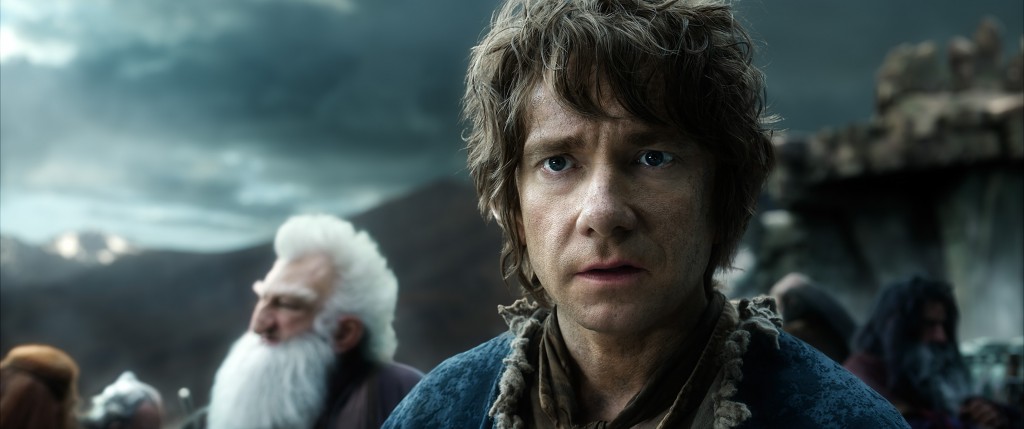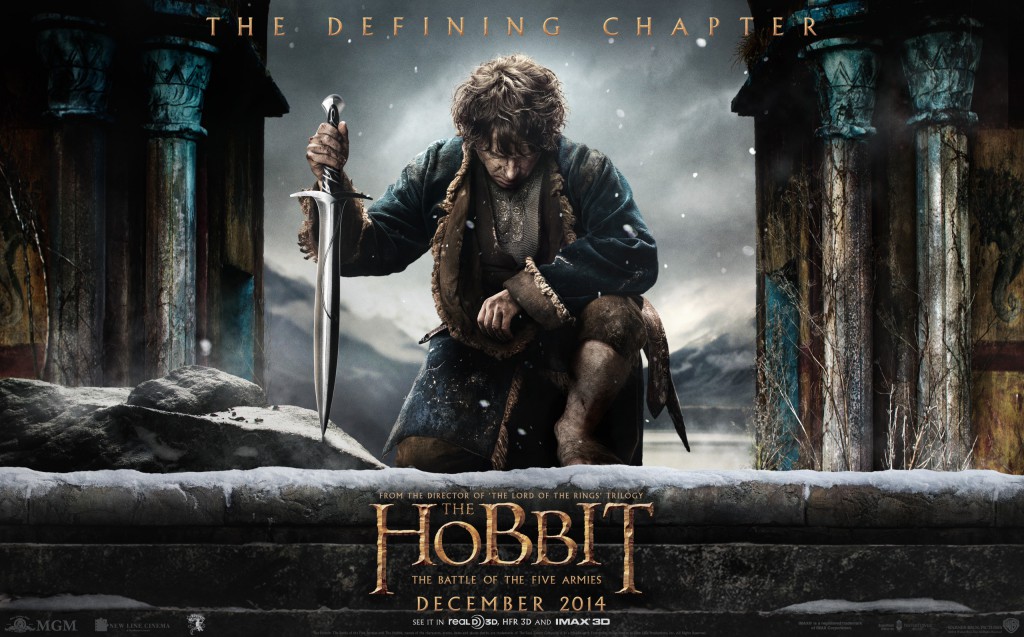 Tickets for The Hobbit: The Battle of the Five Armies went on sale Friday, and it came with a bit of confusion. There are multiple screenings in multiple theaters with all sorts of strange terms attached to them: HFR, Atmos, IMAX, etc. to name a few – to say nothing of whether or not it’s in 3D.
Tickets for The Hobbit: The Battle of the Five Armies went on sale Friday, and it came with a bit of confusion. There are multiple screenings in multiple theaters with all sorts of strange terms attached to them: HFR, Atmos, IMAX, etc. to name a few – to say nothing of whether or not it’s in 3D.
With ticket prices the way they are, you may be a little hesitant to push the “purchase” button on your ticket order in case you mistakenly selected a show in a format you don’t want to see.
Or you may have not even gotten that far, and simply gone cross-eyed at all of the acronyms and strange terms on Fandango, MovieTickets, or whichever portal you prefer, silently crying, “WHAT DOES IT ALL MEAN?!” Your local theaters may not have all of these flavors, and thus your choice is much easier. But many of you may have hit a wall of indecision.
Well, we’re here to compile a list of the different formats available for you to see the final journey to Middle-earth and tell you what they all mean. Those of you who are cinephiles or who have been sorting this all out for yourselves for the past two movies probably know all of this already.
We’re also not offering up any personal opinions of the different formats here. This is meant as an informational primer for the lay people who may feel overwhelmed by all of the different options.

HFR – High Frame Rate
This is the much-hyped format that Jackson and Co. have championed since the release of AUJ. The standard frame rate for film is 24 frames per second, and it’s what our eyes are most used to seeing. HFR jacks that up to 48 frames per second. This creates smoother action, more depth in the images, and also is less strain on the eyes if you’re watching in 3D. It’s also been criticized by many for making the movie look more like a TV show or even a video game. So, if you go to an HFR screening, be prepared for a wildly different viewing experience than you may have at a regular screening.
IMAX
This is the large format with immensely huge screens that a number of movies have started using lately, and is championed primarily by Christopher Nolan most recently with the release of Interstellar. IMAX theaters, by their very nature, are huge, and also tend to have higher quality projectors and sound systems. It should be noted, however, that the Hobbit movies were not filmed specifically for IMAX, and so the framing of the movie on the screen may seem a bit odd.
Dolby Atmos
This is the latest sound innovation by Dolby Labs, and is the most extreme form of surround sound that you’re likely to find. The number of speakers in surround sound typically come from seven angles: three in the front, two on the side, and two in the back. Atmos (Doctor Who fans can go ahead and have a chuckle at the name) throws all of that out the window and sets up dynamic speakers all over the theater from dozens of different angles to create a more immersive sound experience. Opinions on this have ranged from being able to hear a distinct difference in audio quality to not really hearing any marked difference. It should be noted that the Hobbit movies have been optimized for Dolby Atmos, so there likely will be an added dynamic quality here that you may not hear in other theaters.
D-Box
Between the frame rate, the 3D, the screen size and the audio, you’ve taken care of how you will see and hear the movie. D-Box takes it a step further, and changes how the movie actually feels. The theater’s seats themselves vibrate and sway in synch with the movie. They’re not quite as jarring as what you’d likely experience in an amusement park ride, but it does add an extra sensory element to the movie.
These are the terms you may likely not be too familiar with. We’re assuming that you know the difference between 2D and 3D at this point. Not all of these features will be available in your area, and many of them will be mixed and matched depending on what features have been added to your local theaters. You will have to check either with the theater itself or with the ticketing website of your choice to get an idea of what flavors of BOTFA will be shown. Here is a comprehensive list of the various options you are likely to find:
- Film
- Digital 2D
- 3D
- HFR 3D
- HFR 3D D-Box
- HFR 3D Dolby Atmos
- IMAX 3D
- IMAX HFR 3D
This also gets more complicated with the Trilogy screenings that will be happening on December 15th. The formats may change between the movies themselves. For instance, a Trilogy screening may have BOTFA in HFR 3D, but only have AUJ and DOS in regular 3D, so be sure to check with your local theater to see how they’ll be presenting each movie.
Since IMAX, D-Box and Dolby Atmos all require their own uniquely-constructed theaters, you will not likely see these formats cross paths. This may be a blessing in disguise, since a theater that has HFR 3D, IMAX, D-Box and Dolby Atmos may be enough of a sensory overload to make one ill.
We hope this prepares you for what you can expect, and that you know what to look for when choosing how you will venture into Middle-earth. It really is a very crazy list of options. Sound off in the comments below with your thoughts on all of these formats, and which ones you like or dislike. And just think, in a few years we may have a re-release of the trilogy for the Oculus Rift with Smell-O-Vision!
Finally, after (or even before) you’ve acquired your tickets to the screening of your choice, you might want to visit our Line Party round-up page and see if there’s a fan gathering happening in your city — or even start one up yourself!



